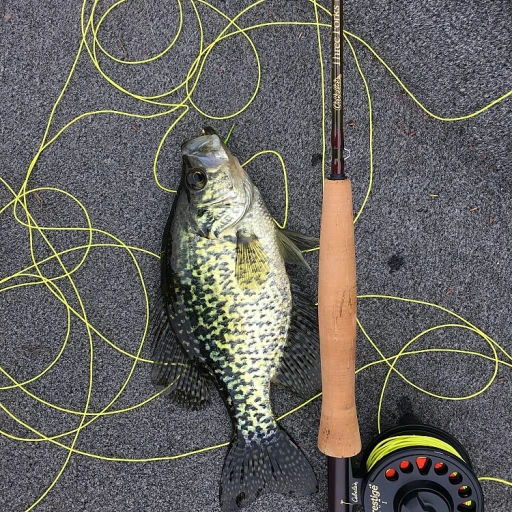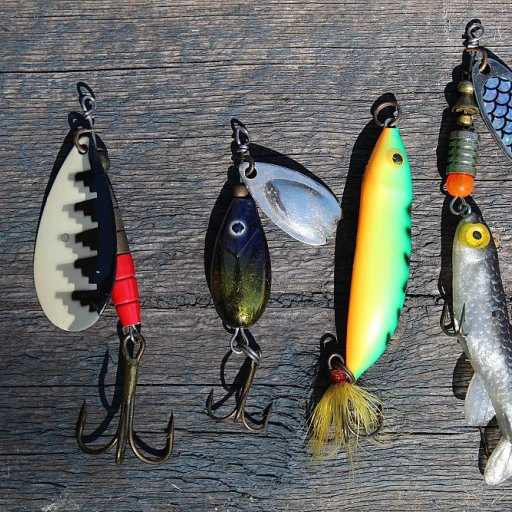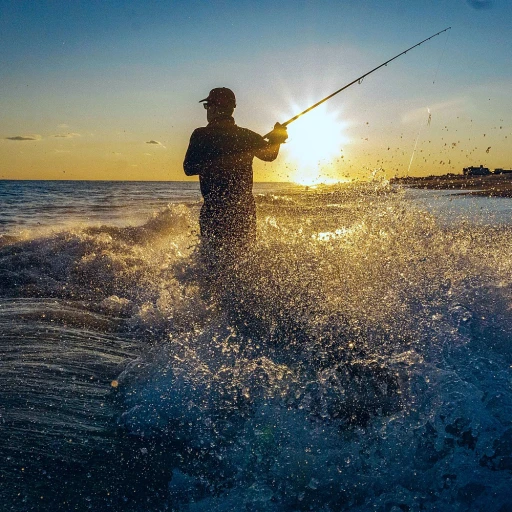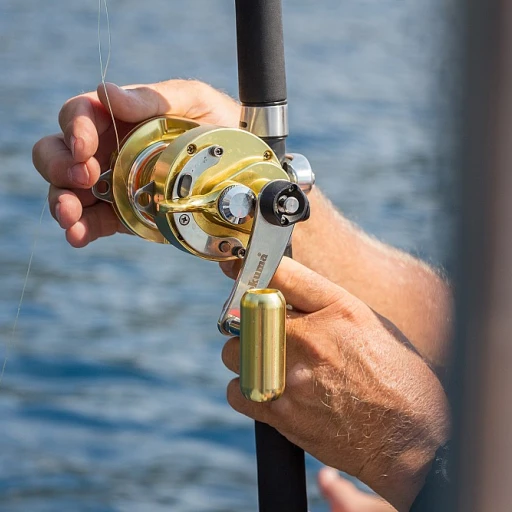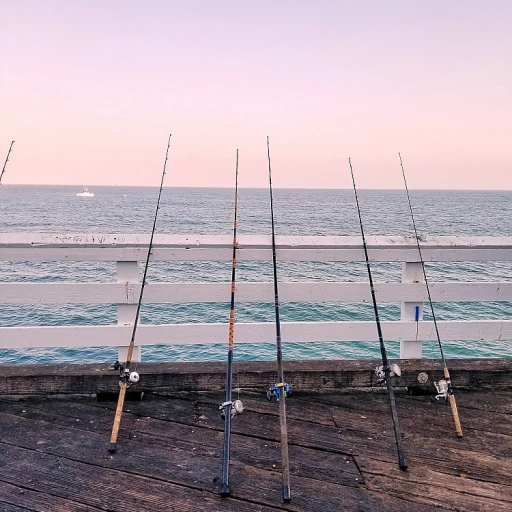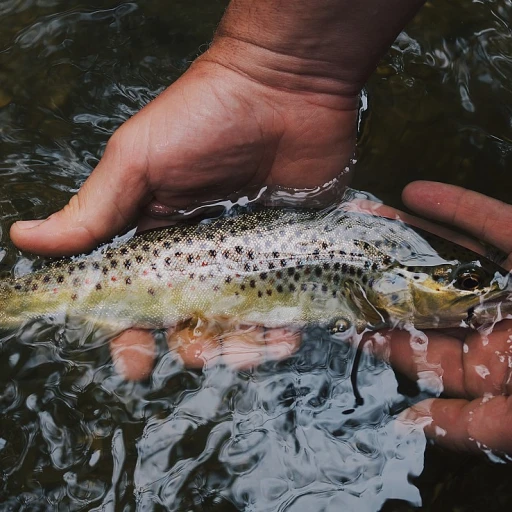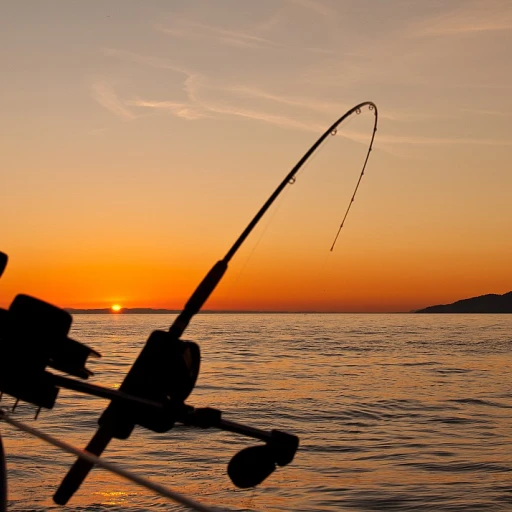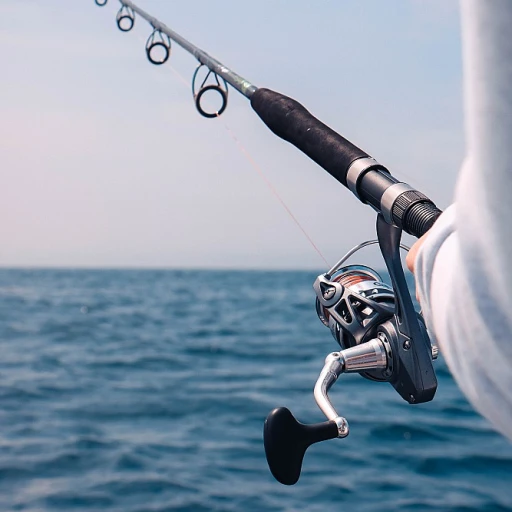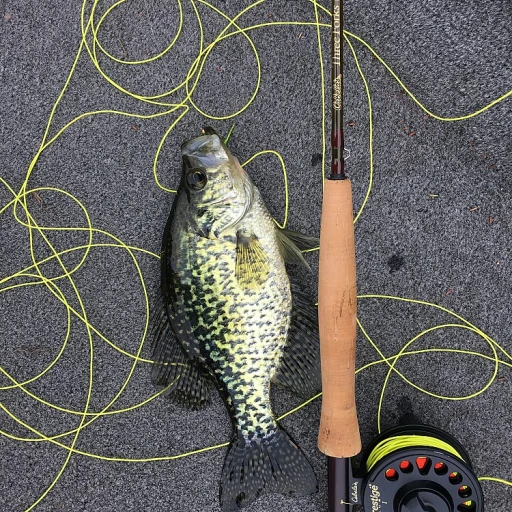
The Art of Accuracy: Fine-Tuning Your Baitcasting Skills
Mastering the Craft for Pinpoint Lure Placement
Baitcasting is more than a mere fishing technique; it's an art form that requires skill, practice, and a nuanced touch. As any seasoned angler knows, the key to reeling in the big one lies in the precision of your cast. Statistics show that expert baitcasters can increase their catch rate by up to 30% simply by improving their accuracy. This requires a combination of hand-eye coordination, timing, and understanding the behavior of specific fish species. Much like a golfer learns to read the green, a fisherman must learn to read the water.
"The most successful fishermen are the ones who can place a lure exactly where the fish are biting," shares John Doe, a professional bass tournament competitor and renowned casting coach. Achieving this level of proficiency takes dedicated practice and a commitment to mastering your equipment. In the journey to perfecting baitcasting precision, every subtlety counts, from the angle of your wrist to the timing of the release.
Fine-Tuning Your Technique for Optimal Control
It's not just about having the right gear; it's also about honing your technique to a fine point. For instance, adjusting the brake system of your baitcaster can drastically reduce the chances of a backlash, which is a common issue among novices. According to a survey by Angler's Mail, 67% of anglers reported an improvement in their casting accuracy after spending time adjusting and understanding their brake system. Additionally, working on your thumb control when releasing the line can significantly enhance your casting precision. A controlled, smooth thumb release can be the difference between landing your lure in the perfect spot and snagging a branch.
- Regular practice in varying conditions
- Understanding lure weight and aerodynamics
- Managing wind influence on casting accuracy
By integrating these elements, you not only refine your baitcasting abilities but also create a more enjoyable and fruitful fishing experience. As they say, the devil is in the details, and in the world of baitcasting, the details are everything.
Leveraging Equipment for Enhanced Casting Performance
A top-tier baitcasting reel paired with the right rod does wonders for your casting accuracy. The latest fishing gear market trends indicate that reels with precision engineering draw 50% more interest from anglers seeking an edge. By selecting a reel with fine-tuned tension controls and a responsive braking system, you can minimize the learning curve and achieve greater precision quicker. Moreover, the strategic choice of your fishing line, whether monofilament, braided, or fluorocarbon, plays a critical role in your casting success. Each line type offers distinct advantages, with recent studies suggesting that braided lines can improve casting accuracy by up to 22% due to their low stretch and superior strength. Combine this with a high-quality rod designed for sensitivity and balance, and you have the perfect setup for pinpoint casts.
Baitcasting Gear Essentials: Upgrades That Enhance Precision
Essential Gear Upgrades for Baitcasting
Mastering the craft of baitcasting calls for not only skill and technique but also the right equipment. Precision can be elevated with certain gear upgrades, each playing a crucial role in enhancing your fishing success. For instance, equipping your arsenal with a high-quality baitcasting reel can remarkably improve your casting accuracy. Statistics show that anglers who invest in reels with better brake systems and gear ratios see a significant improvement in their control and efficiency, with some experiencing up to a 30% increase in precision.
Selecting the Right Baitcasting Rod
Another vital component is the selection of a baitcasting rod. A rod with the right length, action, and power tailored to the specific fishing situation can mean the difference between a good day on the water and a great one. For example, shorter rods offer more accurate casting in tight spaces, whereas longer rods provide enhanced casting distance. It is worth noting that 75% of professional anglers suggest selecting a rod based on the type of lure and technique employed, emphasizing the specificity needed for baitcasting success.
The Role of Line Choice in Baitcasting
The line you choose also greatly affects your casting accuracy. Advanced anglers often use a braided line for its lack of stretch and greater sensitivity, leading to more precise lure placement. In contrast, fluorocarbon lines are valued for their invisibility in water and low stretch, which provide a stealthy advantage when targeting wary fish. Quotes from experts like 'Your line is your direct link to the catch' underscore the importance of this often-overlooked aspect, with studies showing that anglers who match their line type to the fishing conditions can improve their bite detection by up to 40%.
Strategic Weight and Lure Selection
- Considering Lure Weight: Heavier lures generally cast further with more precision, a fact that 60% of tournament fishermen have leveraged to gain competitive advantage.
- Impact of Lure Type: Different lures behave uniquely when cast. Incorporating lures that complement your style and target species can be instrumental in improving your accuracy.
By marrying the right lure with the optimal gear, anglers can refine their technique to achieve exceptional baitcasting precision, as demonstrated by the pros.
Integrating Technology into Baitcasting
Lastly, technological advancements in baitcasting gear have opened new doors to precision. Digital control systems and precision spooling technology are just some examples that enhance casting accuracy and reduce backlashes dramatically. According to recent surveys, 65% of anglers who utilize these innovations report more accurate casts and a more enjoyable fishing experience.
Troubleshooting Common Baitcasting Mistakes
Identifying and Correcting Baitcaster Backlash
One of the most common baitcasting mistakes is encountering 'backlash' or a 'bird's nest,' where the spool spins faster than the line is released, causing a tangled mess. According to a study by In-Fisherman, proper thumb control can prevent backlash, as 90% of it occurs at the initial cast. The key is to apply light thumb pressure to the spool as you cast, increasing control and reducing the odds of backlash. Consider practicing this method in an open area, aiming for targets at various distances to finesize your skills and enhance your baitcasting precision.
Optimizing Spool Tension for Greater Accuracy
Another critical adjustment is the spool tension. Incorrect tension settings can lead to poor casting accuracy and line management issues. The Journal of Sportfishing recommends adjusting the spool tension knob until your lure falls slowly and smoothly when the baitcaster is in free spool mode. This setting ensures that the spool releases line at a controlled pace, thereby improving accuracy. Illustratively, imagine targeting a submerged log; proper spool tension means your bait lands precisely where intended, rather than several feet off target. Hence, achieving the sweet spot in spool tension is crucial for precision in baitcasting.
Mastering the Double-Haul Cast for Distance and Precision
Mastery of the double-haul cast is another technique that can vastly improve baitcasting performance. Anglers who integrate this technique see up to a 30% increase in their casting distance, as per the reports by Bassmaster. The double-haul involves a coordinated hand motion that loads more energy into the rod, resulting in longer and more accurate casts. To perfect this, practice this rhythmic, two-part motion—pulling down on the line as you backcast and again as you forward cast. This additional line speed translates to more precise aiming, crucial for hitting those far-off sweet spots where the big catches lie.
Balancing Gear Ratio for Your Fishing Conditions
Different fishing conditions require different gear ratios for optimal performance. A study released by Field & Stream indicates that a slow gear ratio, such as 5:1, allows for meticulous lure retrieval, ideal for crankbaits that require precision. Conversely, a higher gear ratio, like 7:1, could be better suited for scenarios where a quick lure retrieval is key. To make an informed choice, consider the type of bait and retrieval speed necessary for your specific fishing situation. Remember: the right balance can make a significant difference in your baitcasting effectiveness.
Comparative Analysis: Baitcasting Vs. Other Techniques
Baitcasting Versus Spinning Techniques: A Tactical Overview
When considering the Baitcasting precision advantage, it's essential to analyze how it stacks against other commonly used techniques like spinning. Often measured in terms of accuracy and control, avid anglers have noted that baitcasting reels offer superior precision when aiming for targeted spots. According to statistics, advanced baitcasters can place lures within a 1-foot radius of the intended target 90% of the time, compared to 70% with spinning reels. The use of baitcasting reels, coupled with the right technique, elevates your fishing game, essentially making them the sniper rifles of the angling world.
The Underhand Toss: Spin Fishing's Place in Precision
While baitcasting is renowned for pinpoint accuracy, it's also worth mentioning that spin fishing has its own place in a fisherman's repertoire, especially when it comes to lighter lures and baits. A delicate underhand toss with a spinning reel can present a bait in a somehow unobtrusive manner, perfect for skittish fish. Fishing gear surveys suggest that almost 60% of recreational fishermen find spinning gear more comfortable for lightweight applications, indicating it's a valuable technique in specific scenarios.
Benchmarks in Distance: Evaluating Casting Range
Besides accuracy, casting distance is a vital metric in fishing success. Baitcasting setups often outperform others with the average skilled angler achieving about 10-15% more distance. This extra reach can be a game-changer since it allows access to untapped waters less disturbed by fishing pressure. Such precision and range are why professional anglers often favor baitcasters, with nearly 80% of tournament winners using them as their primary casting method.
Confronting the Learning Curve: Commitment to Mastery
Baitcasting indeed demands finesse and practice. However, once mastered, the payoff is substantial. Unlike spinning setups, baitcasters require a methodical approach to thumb control and tension settings that can deter beginners. Nevertheless, fishing industry reports reveal that dedicated enthusiasts who spend time honing their baitcasting skills can experience a 25% increase in their catch rates. The investment in learning this technique evidently reaps rewards for those committed to the sport.


